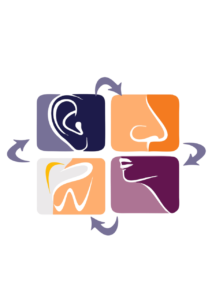Earwax, or cerumen as it’s technically known, is a natural substance produced by glands in the ear canal. It plays a vital role in protecting your ears by trapping dust, dirt, and other debris, and it even has antibacterial properties. Generally, our ears are self-cleaning, and everyday jaw movements like talking and chewing help to move earwax out of the ear canal.
However, sometimes earwax can build up, leading to discomfort, a feeling of fullness, earache, temporary hearing loss, tinnitus (ringing in the ears), or dizziness. When this happens, you might consider earwax removal. But it’s crucial to approach this carefully and know when to seek professional help.
When is Earwax Removal Necessary?
Not everyone needs to have their earwax removed. If you’re not experiencing any symptoms, it’s best to leave your ears alone. Over-cleaning your ears can actually disrupt the natural cleaning process and may even push wax further into the ear canal, leading to impaction.
You should consider earwax removal if you experience any of the symptoms mentioned above. It’s important to consult a healthcare professional to determine if earwax impaction is indeed the cause of your symptoms and to discuss the safest removal methods.
Safe Methods for Earwax Removal
There are several methods for removing earwax, but some are safer and more effective than others.
- Home Remedies (with caution):
- Mineral oil, baby oil, or commercial ear drops: These can help to soften the wax, allowing it to drain out naturally. Follow the instructions on the product and avoid using these if you have a perforated eardrum or an ear infection.
- Warm washcloth: Gently wiping the outer ear with a warm, damp washcloth can help remove any wax that has made its way out of the ear canal. Never insert anything into your ear canal to try and remove wax. This includes cotton swabs, hairpins, or other objects, as they can push the wax further in and potentially damage your eardrum.
- Professional Removal: If home remedies aren’t effective or if you have severe impaction, it’s best to seek professional help from a doctor or audiologist. They can use several safe and effective methods:
- Microsuction: A small vacuum device is used to gently suction the earwax out of the ear canal. This is often considered a very safe and effective method.
- Irrigation: A syringe is used to gently flush warm water into the ear canal to dislodge the wax. This method is not suitable for everyone, especially those with a history of ear infections or a perforated eardrum.
- Manual removal with specialized instruments: A healthcare professional may use small instruments like curettes to carefully remove the earwax.
Methods to Avoid
As mentioned earlier, avoid inserting anything into your ear canal to remove wax. Cotton swabs, in particular, are often counterproductive, pushing the wax further in and potentially causing injury. Ear candling is another method that is widely considered ineffective and potentially dangerous, posing a risk of burns and ear damage.
In Conclusion
Earwax is a natural and beneficial substance. However, when it builds up and causes problems, safe removal is necessary. Consult with a healthcare professional to determine the best and safest method for you. Remember, when it comes to your ears, gentle care and professional advice are always the best approach.
